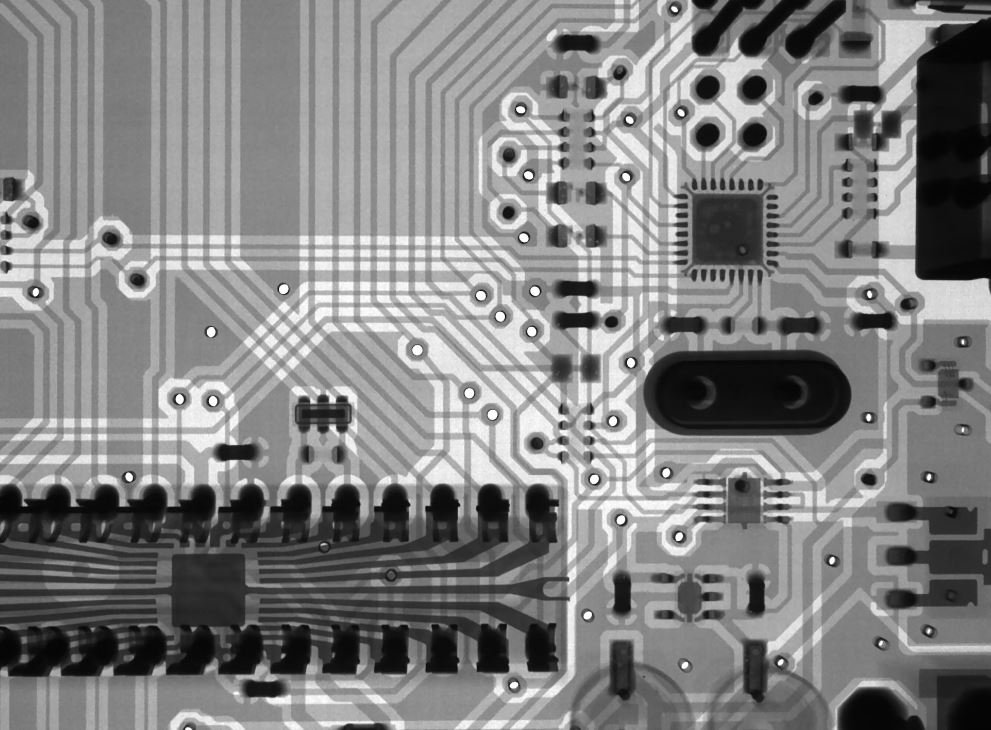Learn AI Editing
Artificial Intelligence (AI) has revolutionized many industries, and editing is no exception. With the advent of AI-powered editing tools, the process of editing text and multimedia content has become faster, more efficient, and more precise. Whether you are a blogger, content creator, or professional editor, learning AI editing techniques can greatly enhance your skills and productivity. In this article, we will explore the key concepts, techniques, and benefits of AI editing.
Key Takeaways:
- AI editing enhances efficiency and precision in editing tasks.
- AI-powered tools can assist with grammar, spelling, style, and content improvement.
- Learning AI editing can improve content quality and save time.
Understanding AI Editing
AI editing refers to the use of artificial intelligence technologies to automate and improve various aspects of the editing process. These technologies include natural language processing (NLP), machine learning, and deep learning algorithms. AI editing tools can assist in grammar and spelling checks, style suggestions, content improvement, and even generate entirely new content based on given prompts. With AI, editors can streamline their workflow and focus on higher-level editing tasks.
In AI editing, algorithms analyze written content and provide suggestions for improvements, such as identifying improper grammar usage or recommending alternative words or phrases to enhance clarity.
Benefits of AI Editing
AI editing brings numerous benefits to the editing process:
- Increased efficiency: AI-powered tools can handle repetitive and time-consuming tasks, freeing up editors’ time for more impactful work.
- Improved accuracy: AI algorithms can detect and correct errors more effectively than manual editing, ensuring high-quality content.
- Enhanced creativity: AI editing tools can generate new ideas and provide inspiration for content creators.
- Consistency: AI algorithms can enforce style and formatting guidelines consistently throughout a document or across multiple pieces of content.
AI Editing Techniques
There are various AI editing techniques utilized in the industry. Some of the most commonly used ones include:
- Auto-correction: AI algorithms can automatically correct spelling and grammar errors.
- Language style check: AI editing tools can suggest improvements to make the content more engaging and readable.
- Content generation: AI algorithms can generate coherent and relevant content based on a given input or prompt.
- Plagiarism detection: AI-powered tools can help identify instances of plagiarism by comparing content against vast databases.
AI Editing in Practice
Let’s take a closer look at how AI editing can be applied in real-life scenarios. The following tables provide interesting information and data points:
| AI Editing Tool | Features | Price |
|---|---|---|
| Grammarly | Spelling, grammar, style suggestions, plagiarism detection | Freemium model available, paid plans start at $11.66/month |
| Hemingway Editor | Readability analysis, style improvements | Free online version, desktop app for $19.99 |
| AI Editing Tool | Accuracy | Speed |
|---|---|---|
| Grammarly | 90% | 2 seconds |
| Hemingway Editor | 85% | 5 seconds |
Final Thoughts
AI editing has transformed the editing landscape, offering powerful tools and techniques to enhance editing processes. By leveraging AI, editors can significantly improve efficiency, accuracy, and creativity. Incorporating AI editing into your workflow can elevate your content quality and save valuable time, allowing you to focus on higher-level tasks.

Common Misconceptions
Misconception 1: AI Editing replaces human editors
One common misconception people have about AI editing is that it replaces the need for human editors. However, this is far from the truth. While AI technology can assist and automate certain editing tasks, it does not possess the same level of creativity, intuition, and understanding as human editors. AI editing tools can analyze and make suggestions for grammar and spelling, but they cannot replicate the contextual understanding and judgment that a human editor brings to the table.
- AI editing tools can speed up the editing process
- Human editors provide a personal touch and adapt to writer’s style
- AI editing tools cannot understand the nuance and intent behind a piece of writing
Misconception 2: AI Editing is error-free
Another misconception is that AI editing is error-free and will catch all mistakes. While AI editing tools can certainly catch many grammar and spelling errors, they are not infallible. AI algorithms may sometimes misinterpret context or fail to recognize more nuanced errors. It is important to remember that AI editing should be used as a helpful tool, but it is still necessary to have human oversight and proofreading to ensure the highest quality of editing.
- AI editing tools can overlook errors that require subjective judgment
- Human editors can catch errors that AI algorithms might miss
- AI editing may not always recognize stylistic preferences or intentional deviations from grammar rules
Misconception 3: AI Editing is a one-size-fits-all solution
There is a misconception that AI editing can provide a universal solution for all types of writing. However, different writing styles, genres, and tones require different editing approaches. While AI editing tools can offer general suggestions and improvements, they may not be tailored to the specific requirements of a particular piece of writing or its intended audience. Human editors, on the other hand, can adapt their editing techniques to fit the specific needs of the writer and the context of the writing.
- AI editing tools may not be suitable for highly specialized or technical writing
- Human editors can provide targeted feedback and recommendations based on the writer’s goals
- Different styles of writing may require different levels of editing, which AI tools may not be able to accommodate
Misconception 4: AI Editing is a threat to human editors
Some people perceive AI editing as a threat to human editors and their livelihoods. However, the reality is that AI editing tools are designed to augment and assist human editors rather than replace them. AI technology can help streamline the editing process, allowing human editors to focus on more complex and creative aspects of their work. Additionally, AI editing tools can create more opportunities for collaboration between AI and human editors to achieve the best possible outcome.
- AI editing tools can enhance productivity and efficiency for human editors
- Human editors can provide the necessary human touch and understanding in the editing process
- Collaboration between AI and human editors can lead to improved editing outcomes
Misconception 5: AI Editing is only for professional writers
Lastly, there is a misconception that AI editing is only beneficial for professional writers. This is not the case. AI editing tools are accessible to all writers, regardless of their level of expertise. Whether you are a student, a blogger, or a business professional, AI editing tools can assist you in improving your writing by providing suggestions for grammar, spelling, and style. It is important to recognize that AI editing can be a valuable tool for anyone looking to enhance their writing skills.
- AI editing tools can help non-professional writers improve their writing quality
- Even experienced writers can benefit from the speed and efficiency of AI editing tools
- AI editing tools can provide valuable feedback and recommendations for self-improvement

How AI is Revolutionizing Photo Editing
In today’s digital age, everyone has access to powerful photo editing tools. However, the process of manually enhancing images can be time-consuming and require expertise. Thanks to advances in artificial intelligence (AI), photo editing has become more accessible and efficient than ever before. This article explores various ways in which AI is revolutionizing photo editing, providing users with remarkable results with minimal effort. The following tables showcase the incredible capabilities of AI-powered editing tools.
Enhancement with AI Filters
AI filters allow users to transform ordinary photos into stunning works of art by applying various effects and enhancing colors. These filters use machine learning algorithms to analyze and align different elements within the image. As a result, AI can automatically adjust brightness, contrast, saturation, and other parameters to create visually appealing pictures.
| Original Image | AI-Enhanced Image |
|---|---|
 |
 |
Semantic Segmentation for Accurate Object Isolation
AI algorithms employ semantic segmentation to precisely identify and isolate objects within an image. This technique is particularly useful for removing backgrounds or enhancing specific elements, such as highlighting a person or a product. By automatically understanding the context, AI makes object selection seamless and effortless.
| Original Image | Object Isolation |
|---|---|
 |
 |
Noise Reduction and Sharpening
AI-assisted noise reduction techniques and sharpening algorithms enhance image quality, reducing unwanted artifacts and bringing out crisp details. By analyzing patterns and applying sophisticated algorithms, AI can effectively remove noise while preserving important image elements.
| Noisy Image | Noise Reduction | AI-Sharpened |
|---|---|---|
 |
 |
 |
Automatic Colorization
AI enables automatic colorization of black and white photographs, breathing new life into historical images. By analyzing tonal ranges and patterns, AI algorithms intelligently apply colors to each element, creating realistic and vivid results.
| Original Black & White Image | AI-Colorized Image |
|---|---|
 |
 |
Beauty Retouching with AI
AI-driven beauty retouching tools in photo editing applications enhance facial features, smooth skin, and correct imperfections while maintaining a natural appearance. These intelligent algorithms analyze thousands of professional retouched images, providing users with effortless and flattering enhancements.
| Original Image | AI-Retouched Image |
|---|---|
 |
 |
Smart Background Replacement
AI-powered background replacement tools offer users the ability to easily replace or add new backgrounds to their images. By employing machine learning algorithms, these tools understand the foreground and seamlessly blend it with the chosen background, achieving visually striking results.
| Original Image | New Background |
|---|---|
 |
 |
Instant Object Removal
AI allows users to effortlessly remove unwanted objects or people from their photos. By analyzing the image’s content, AI algorithms effectively fill in the missing areas, resulting in a seamless removal that is almost indistinguishable from the original.
| Original Image | Object Removed |
|---|---|
 |
 |
Super Resolution Image Upscaling
AI-based image upscaling techniques enhance the resolution and quality of low-resolution images. By analyzing patterns and using machine learning algorithms, AI algorithms can intelligently predict and generate missing details, resulting in enhanced images with higher clarity.
| Low-Resolution Image | AI-Super Resolved Image |
|---|---|
 |
 |
Style Transfer for Creative Effects
AI-powered style transfer allows users to apply various artistic styles to their photos. By combining the content of an image with the style of a famous artwork, AI algorithms create unique and visually captivating compositions.
| Original Image | Style Transfer |
|---|---|
 |
 |
The remarkable advancements in AI-driven photo editing tools have democratized the field, enabling users of all skill levels to achieve professional-quality results. By harnessing the potential of AI, photo editing is becoming accessible, intuitive, and most importantly, immensely enjoyable. Embrace the power of AI editing, and see your images transform in ways you never thought possible.
Frequently Asked Questions
What is AI editing?
AI editing refers to the use of artificial intelligence technology to automatically edit various types of media, such as photos, videos, or audio. It involves using algorithms to enhance, modify, or analyze the content in a way that typically requires human intervention.
How does AI editing work?
AI editing relies on machine learning algorithms that have been trained on vast amounts of data. These algorithms are capable of understanding patterns, recognizing objects, and making decisions based on predefined rules or objectives. By feeding the AI system with specific instructions, it can process and manipulate media content to achieve desired editing outcomes.
What are the benefits of using AI editing?
AI editing offers several advantages, including improved efficiency, increased accuracy, and enhanced creativity. It can automate repetitive editing tasks, saving time and effort for content creators. AI algorithms can also analyze and process data at a much faster rate than humans, resulting in quicker turnaround times. Additionally, AI editing tools can generate unique effects or styles that may not be easily achievable through manual editing.
Can AI editing replace human editors?
While AI editing technology has advanced significantly, it is unlikely to replace human editors entirely. Human editors possess creative judgment, intuition, and subjective decision-making abilities that AI algorithms currently lack. Moreover, collaborative work environments often require human involvement to understand and meet specific artistic or storytelling goals. However, AI editing can complement human editors by automating repetitive tasks, enhancing workflow, and providing innovative editing options.
What types of media can AI editing be applied to?
AI editing can be applied to various types of media, including images, videos, and audio. In the case of images, AI algorithms can automatically adjust color, brightness, or sharpness, remove blemishes or objects, and even create artistic filters or styles. In videos, AI editing can assist with tasks like stabilization, object recognition, or scene segmentation. Similarly, AI algorithms can enhance audio quality, remove background noise, or generate realistic speech.
Is AI editing software easy to use?
The ease of use of AI editing software can vary depending on the specific tool or platform. Some AI editing software may require advanced technical knowledge or expertise to operate effectively. However, there are also user-friendly AI editing applications available that simplify the process and provide intuitive interfaces. These tools often offer pre-defined editing options, sliders for adjustment, and user-friendly workflows to make the editing process accessible to a wider audience.
Are there any ethical concerns associated with AI editing?
Yes, there are ethical concerns associated with AI editing. For example, AI algorithms can be prone to biases, which may result in unequal treatment or misrepresentation of certain groups. Additionally, AI editing capabilities, such as deepfake technology, have raised concerns about the potential misuse or manipulation of media content. It is important to use AI editing technology responsibly, ensuring transparency, fairness, and accountability in its application.
Can AI editing algorithms learn from user feedback?
Yes, AI editing algorithms can learn from user feedback. Many AI systems incorporate mechanisms to collect and analyze user feedback, allowing them to continuously improve their performance. By extrapolating insights from user interactions, AI algorithms can adjust their behavior or learn from user preferences to deliver more accurate or tailored editing results over time.
Are there any legal considerations when using AI editing?
When using AI editing, there may be legal considerations to be mindful of, particularly in relation to copyright and intellectual property rights. It is important to ensure that the content being edited does not infringe upon the rights of others and that any necessary permissions or licenses are obtained. Additionally, the use of AI editing technology for certain applications, such as deepfake creation, may be subject to specific legal regulations or restrictions.
Where can I find AI editing tools and resources?
There are several AI editing tools and resources available, both as standalone software and as integrated features in popular editing software. Some examples include Adobe Photoshop’s AI-powered features, AI-based video editing applications like Magisto, or AI plugins for audio editing software like iZotope RX. Additionally, various online communities, forums, and tutorials provide valuable resources and guidance for learning and exploring AI editing.




